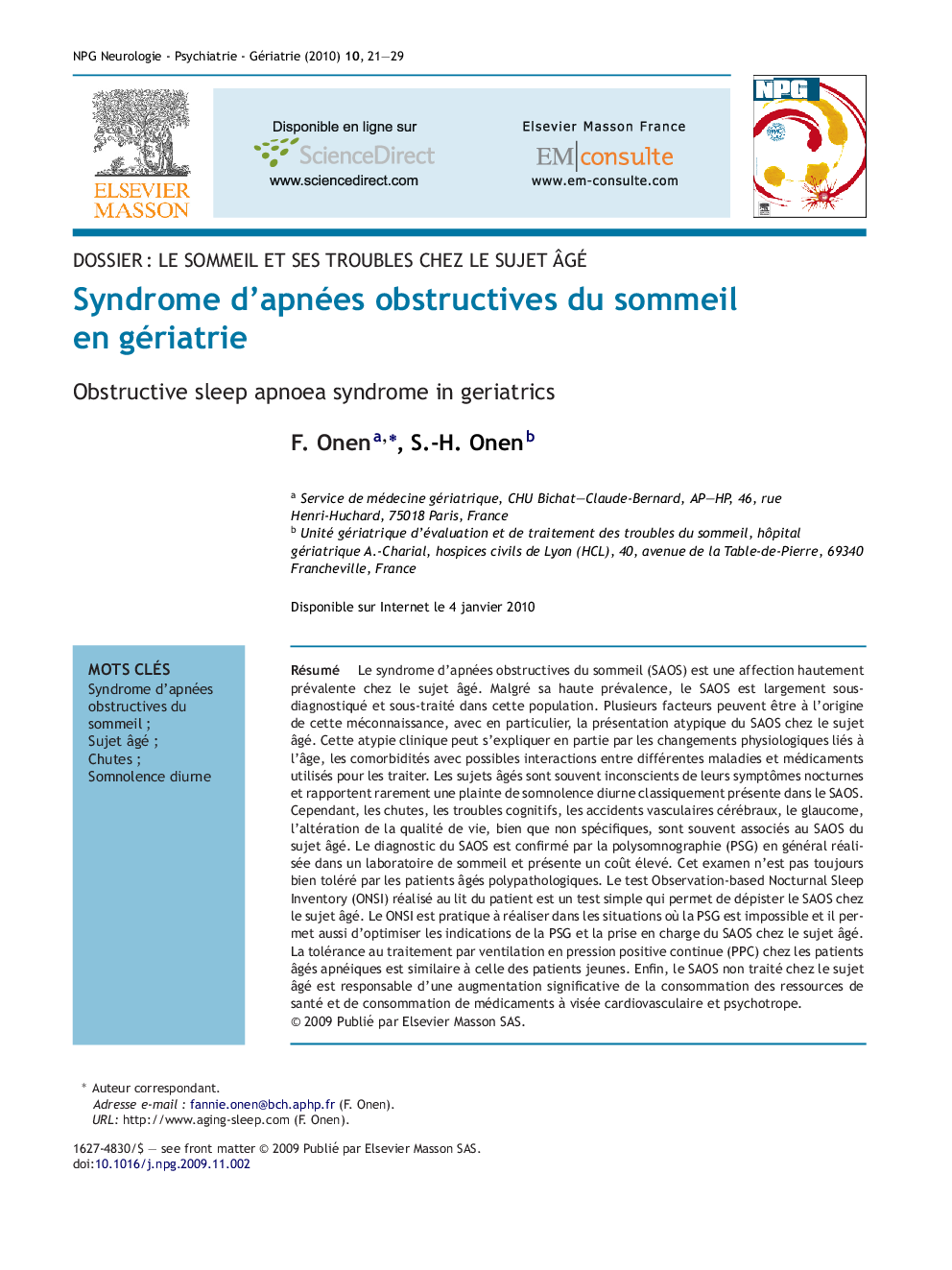| Article ID | Journal | Published Year | Pages | File Type |
|---|---|---|---|---|
| 3326476 | NPG Neurologie - Psychiatrie - Gériatrie | 2010 | 9 Pages |
Abstract
Obstructive sleep apnea syndrome (OSAS) is a highly prevalent condition in older adults. Despite its high prevalence, OSAS is significantly under diagnosed and under treated in this population. Several factors underlie the lack of recognition of OSAS in older adults. One important factor may be the atypical clinical presentation of the disorder. Age-related physiological changes, multiple comorbidities with possible disease - disease interactions, and the effects of multiple medication may be responsible for atypical manifestations of OSAS. Older individuals with sleep apnea are often unaware of the nighttime symptoms of this condition and rarely complain of daytime sleepiness. However, falls, cognitive impairment, stroke, glaucoma, and impaired quality of life are unspecific but frequently associated conditions in the elderly with OSAS. Definitive diagnosis depends on polysomnography (PSG), usually requiring costly overnight laboratory testing. In addition, PSG is inconvenient for some elderly patients with multiple comorbid conditions. A simple bedside test, the Observation-based Nocturnal Sleep Inventory (ONSI), is useful to screen sleep apnea in the elderly. The ONSI may be practical in situations in which PSG is initially impractical or in populations with comorbidities to help define further diagnostic and treatment options. Tolerance to continuous positive air pressure in elderly symptomatic OSAS patients is similar to that of younger patients. Elderly patients with untreated OSAS have high healthcare utilization because of cardiovascular disease morbidity and use of cardiovascular and psychotropic medication.
Keywords
Related Topics
Health Sciences
Medicine and Dentistry
Geriatrics and Gerontology
Authors
F. Onen, S.-H. Onen,
